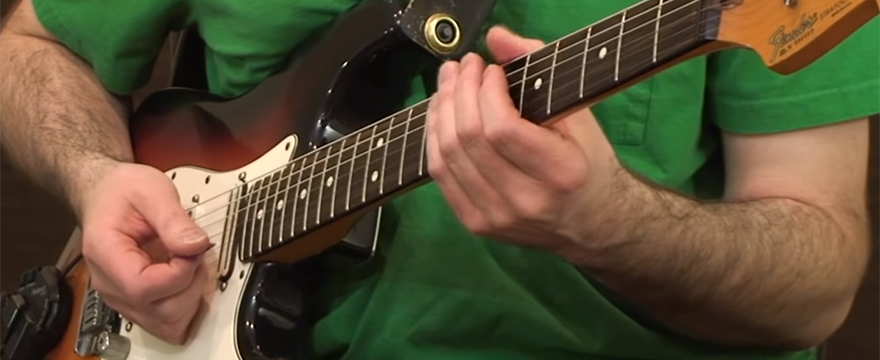Do you know how to establish your own personal “Rhythm Zone?” Most players are poor at rhythm guitar because they haven’t established their rhythm zone. This lesson discusses how to tap into higher level rhythm skills through song practice and also by recording and then listening to your own rhythm playing…
Q: Well I just got kicked out of my 3rd band. I keep being told that my rhythm skills suck. Is there any way that you could put together a proper rhythm guitar work-out? I think my biggest problem is between my ear hearing the correct groove and my hands being able to jam out the proper notes. Hope you can help me — you’re a great teacher!
Owen – London, ON. CANADA
A: When I teach rhythm guitar here at Creative Guitar Studio my students get a multi-step plan.
STEP ONE:
Start by realizing that 85-90% of the time that we’re playing guitar with others, we’re doing so as rhythm guitar players.
This means that we need to have solid rhythm and timing skills in place for being capable of playing the songs of our repertoire adequately in time. To test this, you’ll want to spend time playing along with a drum machine or with a click-track /metronome.
STEP TWO:
The next concept is being able to discover your, “Rhythm Zone.” This means learning a ton of different songs, in different music styles and then applying the different subtleties of each style along with rhythmic nuances and rhythm playing techniques.
A lot of players shun this work because they are only interested in certain music styles. However, a guitarist needs to realize that exposure to many different styles will be the first step in moving your rhythm skills forward!
STEP THREE:
The next step is to, “Listen to Yourself.” This means as you slowly progress, record yourself and listen back closely. You’ll pick-up on a number of flaws in your playing this way.
Once you start realizing where your weak rhythm areas are, you can work at converting those weak skills into better playing techniques.
CONCLUSION:
It is important to understand that all of this won’t occur from just hacking around and playing guitar for fun, you’ll need a plan. And, there will have to be many hours spent polishing up your ability levels as you implement that plan.
The video begins with a discussion that covers rhythm guitar fundamentals and it includes some on-screen theory.
After that, I take these ideas onto the guitar neck in the studio and demonstrate the examples on the instrument.
The goal is to help clarify the sound and establish what you will need to study in order to eventually develop a solid rhythm guitar practice approach.
- Click the button below to download the lesson handout
(access to lesson material will require a FREE membership)
